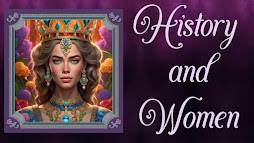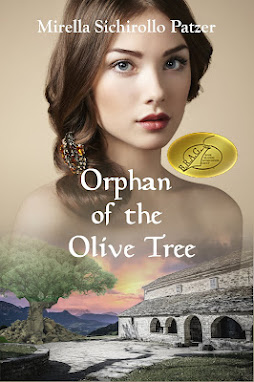19th Century
China Mary - The Woman who ran "The Town Too Tough to Die"
The Old West holds a distinctive place in the annals of American
history. It was an optimistic time where the western frontier encapsulated
opportunity itself. Of all the legendary settlements that popped up along the
western frontier, none were more infamous than Tombstone. Founded in 1877, Tombstone,
Arizona was soon dubbed “The Town Too Tough to Die”. More than 140 years later,
it still holds that moniker. Tombstone
featured over 100 saloons, 14 gambling halls, the first real “red light” district
in the American Southwest and a livery stable called the O.K. Corral. The old west will always
be remembered as the era of the Cowboy but during its peak years, Tombstone was
controlled by a female immigrant. Her name was China Mary and she ran “The Town
Too Tough to Die”.
The woman
known as China Mary was born nee Sing (aka Ah Chum) in Zhongshan County, China in
1839. She arrived in Tombstone sometime
in late 1879. At that time the Chinese
population in Tombstone was eleven people. Within eighteen months, that had
grown to over two-hundred fifty. Mary was drawn to Tombstone because she was an
astute businesswoman. She recognized the unprecedented profits waiting in the
western “boomtowns”; and Tombstone was one of the most prolific boomtowns in
the history of the west.
Due to the
unprecedented silver production, the town of Tombstone grew in population from
100 to around 14,000 in less than seven years. By the mid 1880s, it was larger
than San Francisco and was the fastest growing city between St. Louis and San
Francisco. According to actress Josephine
Marcus,
“The grimly
humorous phrase about our town was that Tombstone had a man for breakfast
every morning”.
Despite its tough reputation, Tombstone was the most cultivated city west of
the Mississippi and China Mary was the most powerful person in it. This is because
she held the strings to “Hoptown”.
Hoptown,
where all the Chinese lived, took up one square block on one end of town, and
was honeycombed with alleys and tunnels.
It was so named because it appeared to the townspeople that the Chinese
“hopped” in and “hopped” out. China Mary, who was usually adorned in fine silk
robes and brilliant jade jewelry, owned and operated a general store located in
the heart of Hoptown. Mary’s store dealt in both American and Chinese
merchandise. She quickly gained a reputation as a universal accommodator. Everyone
knew that nothing in Hoptown was done without China Mary’s go ahead so she was
held in high esteem throughout Tombstone society. She was an organized and
shrewd business operator who had the attitude that discourse was bad for
business. Her private police force handled any problem that arose within her
community and was much feared by the “round-eyes”, as they called the whites.
Mary enjoyed
the highest level of respect. As a result, she could act as a sort of
intermediary between the Asian community and other ethnic groups. In addition
to dealing in customary goods of the day, Mary also controlled several
industries that were commonplace, if not essential, to a town on the frontier.
For example, Mary was a prolific money lender where she had her own methods of
both approving customers and collecting delinquent
debts. She also controlled the laundry business. Mary had a virtual monopoly on
hand laundry commerce in the dusty desert town because she was the bridge to
the desired Chinese workforce. She brokered the employment for nearly every
Chinese worker in Tombstone and personally guaranteed their honesty and quality
of work. Her assurance was simple, "Them steal, me pay!" As far as payment
was concerned, it was always made to China Mary and never to the employee. Her
capacity lay somewhere between a local politician, adjudicator, and translator.
However, when Mary saw opportunity, like any good businesswoman, she exploited
it.
The vice
trade was big business in Tombstone and China Mary was its biggest purveyor. In
addition to running a gambling hall behind her general store, she was also the preeminent
broker for opium, laudanum and Chinese prostitutes. Mary did not discriminate.
She recognized the benefit of catering to markets of all nationalities. She
also ensured that the terms of every business deal or vice arrangement would be
performed to her stipulation. Tombstone may have had its share of violent
killers, but nobody was as feared as the one who reigned over Hoptown and her
team of loyal enforcers. Law and order was at best a blurred line, but not in
the kingdom of China Mary.
Mary was a
hard woman because she had to be. Her times demanded it. But that is not to
suggest that she was without compassion. It was said that in Hoptown, any
person in need of medical attention would never be turned away at Mary’s door. Her
charity was not limited to the Chinese contingent either. On one particular occasion,
a cowboy named Andy Darnell suffered a badly broken leg after falling from his
horse. Tombstone did not have a hospital so other arrangements had to be made. Darnell
had to heal at a local boarding house operated by a woman named Mary Tack.
China Mary insisted on paying for all costs associated with the injured
cowboy’s recovery. Mary was notorious for many reasons but among them was the
empathy she showed to those in need.
The “Town Too
Tough to Die” survived its infancy because the diverse community was able to
coexist. It was allowed to thrive due to the collaboration if its citizens. China
Mary was the conduit that made that cooperation possible. She provided
necessary services to a burgeoning frontier society and supplied the means of
vice demanded by many of its inhabitants. She was not only a cunning
businesswoman, but a sympathetic humanitarian and a calculating capitalist. Mary’s
was a genuine immigrant success story and even as a woman in the old west, she
wielded real power.
Mary died in
December, 1906 of heart failure. She was 67 years old.
Over one thousand people
attended her funeral. She was buried at Boothill Graveyard in Tombstone, so
named because most of the people interred there died with their boots on. Her
grave is one of the top tourist attractions in Tombstone to this day.
Although
China Mary came from the Far East, she will always be remembered as a great
woman of the West. Her popularity continues to gain traction since her death.
In 1960, Mary was portrayed by actress Anna May Wong in an episode of the
television series, “The Life and Legend of Wyatt Earp”. Released in 2020, the Vali
Benson novel, “Blood and Silver”, is a fictional account of her actual
influence. It details Mary’s supremacy in Tombstone as an honorable woman of
standing who was feared, admired, and respected.
Vali Benson grew up in the Midwest.
She now lives in Tucson with her husband, two sons and grandchildren. After graduating from
the University of Illinois, Vali started and sold two successful businesses
before she decided to pursue her real passion of writing. She published several
articles in a variety of periodicals, including History Magazine before she
decided to try her hand at fiction. In April of 2020, Vali
published her first novel, “Blood and Silver”. That same month, she was also
made a member of the Western Writers of America.
You can visit Vali Benson at: http://valibenson.com/






















Post a Comment
0 Comments